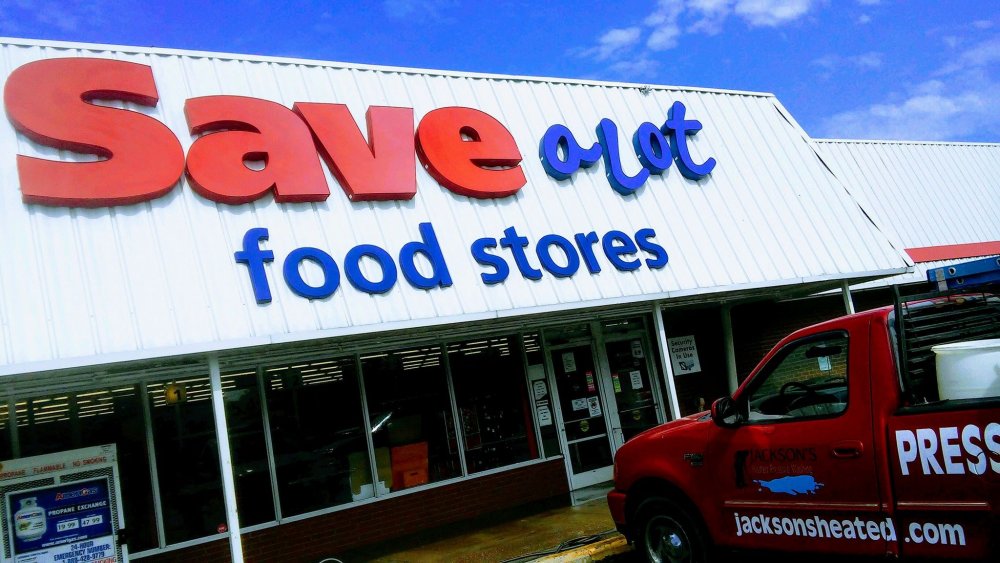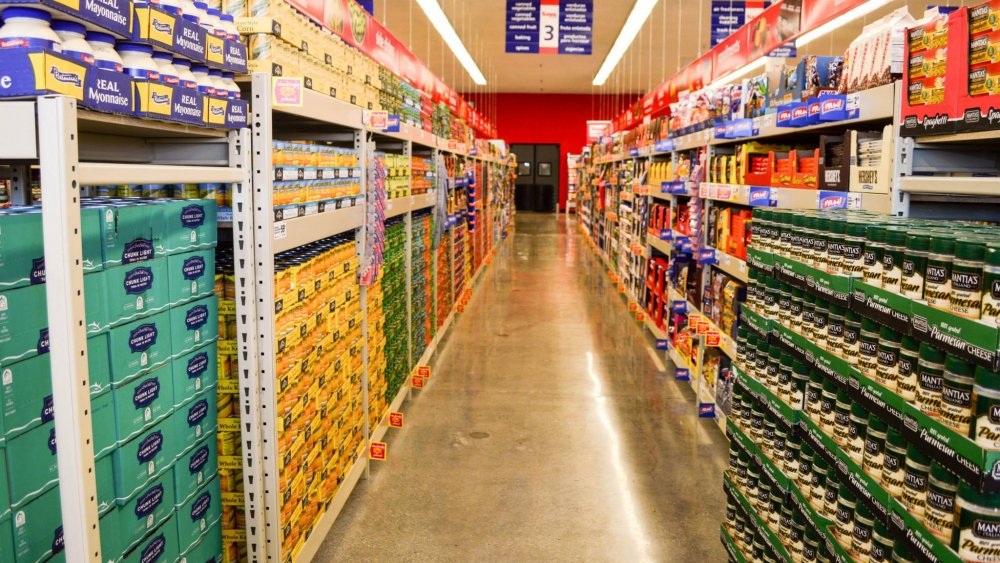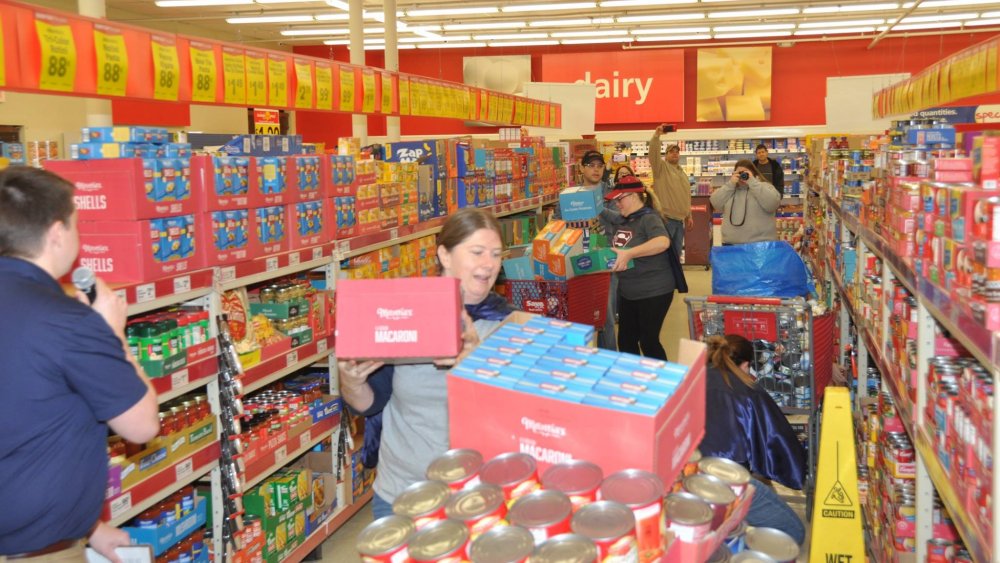The Real Reason Save-A-Lot Food Is So Cheap
The future of grocery shopping, according to Save-A-Lot Chief Operating Officer Kevin Proctor, breaks down into what he calls "three main buckets" — big-box variety retailers like Walmart, high-end specialty grocers, and discount chains. When it comes to this latter category, two of the biggest are Aldi and Save-A-Lot, and it could be said that Save-a-Lot is to Aldi, as Walmart is to Target. While both offer a similar shopping experience, Aldi holds a certain cult status, while the former offers nothing but low, low prices.
Despite its lack of imported European chocolates, Save-a-Lot does have one significant edge over Aldi, though — Proctor told Supermarket News that these stores are able to vary their offerings to specifically tailor them to their communities. For example, a Save-a-Lot located in a largely Hispanic area may offer such items as chicharrones. All Aldi offerings, on the other hand, tend to be fairly similar from one store to the next, regardless of community demographics.
So how is Save-A-Lot able to offer groceries at such low prices? It comes down to three main factors: smaller size and selection, focus on private-label brands, and a streamlined service model that cuts down on labor costs.
Save-A-Lot keeps it small
Save-A-Lot stores, like Aldis, are on the small side. Supermarket News says each one is around 15,000 square feet, as compared to over 180,000 for a store like a Walmart Supercenter (via Walmart). Smaller stores, like tiny houses, mean huge savings on utilities and other overhead costs.
Save-A-Lot also offers a more limited product range to fit its fewer aisles. According to Sarah Griffin, Save-A-Lot's director of communications, approximately 70 percent of the items offered by the grocery chain are their own in-house brands (via Cheapism). Stocking private labels in preference to name brands cuts out the middle person in the supply chain, and also has the bonus of eliminating any price markups that may have been necessitated by expensive ad campaigns. If you are a fan of non-generics, though, Save-A-Lot does offer a wider range of these than Aldi, since over 90 percent of items offered by the European chain are store brands.
The no-frills Save-a-Lot experience
Save-A-Lots don't spend a lot of employee hours creating fancy displays; they're more into the open-box aesthetic. And while not all Save-A-Lots have gone to a rent-a-cart model yet, Griffin admits that they're trending that way, and they do charge for plastic bags, as well. You'll also be bagging your own groceries, which is one fewer chore for store employees. Fewer duties, in fact, make for fewer employees, since Save-A-Lot only needs sufficient staff to cover its checkout lanes and stock the shelves in their signature minimalist way.
The lower the payroll, the lower the store's overhead, and yes, those savings are passed along to the shopper. In fact, a 2016 survey by Kantar Retail found that Save-A-Lot beat out Aldi (and everybody else, including Walmart and Dollar General) when it came to prices on edible items (via Coupons in the News). So, if you're just looking for the cheapest food and can dispense with cachet, it looks like Save-A-Lot may be your next go-to grocery store.


